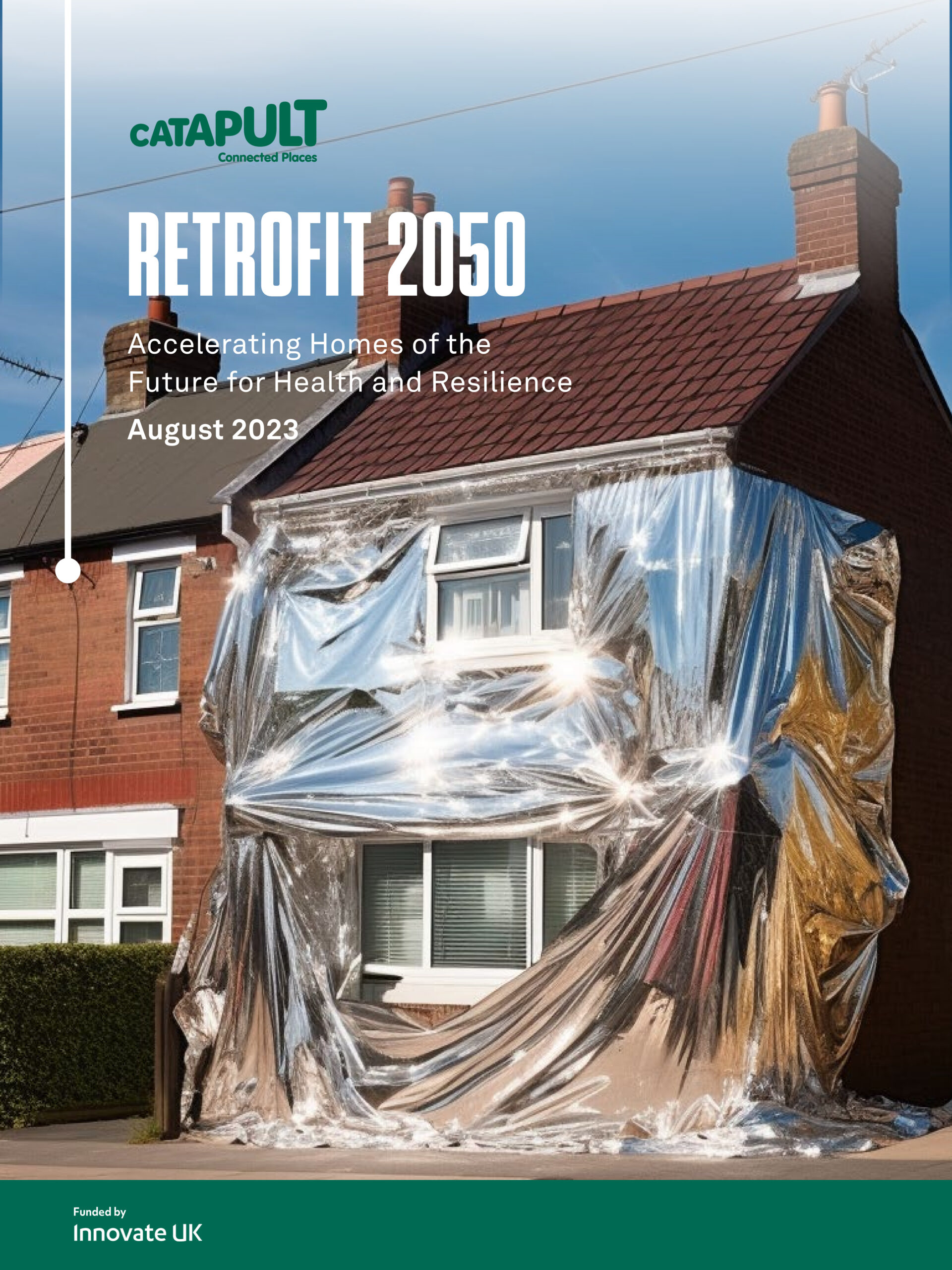In 2050, four out of five households will live in homes that have already been built. It is already apparent that our ageing housing stock is unable to uphold the health and resilience of its diverse occupants. Large swathes of our existing homes have sub-standard energy performance ratings [1] while 1 in 3 people currently live in poor quality housing that poses danger or detriment to their health and wellbeing [2]. In addition, almost two-thirds of our homes are in private ownership and owner-occupied, which means that the burden of their maintenance and update is with homeowners, who may not realise the extent to which their homes affect their energy bills or their health. For those who do, the maze of technological solutions and their unaffordability can present hurdles to adoption. A changing climate, alongside shifting demographics and societal needs, requires that we urgently adapt these existing homes to meet our future needs.
Simultaneously, the way we build our new homes is of paramount importance. An ageing construction skills workforce and rising material and building costs have come head-to-head within an unsupportive policy environment. This has led to the loss of valuable skills and craftsmanship in the construction industry. In a context of wage stagnation, affordability is king. This has driven the industry towards mass production of ‘mediocre’ homes [3], pricing out SME builders and compromising the potential of new homes to contribute to the health and wellbeing of people, place and planet.
In the face of these challenges, there are several opportunities. Macro and micro trends hint at opportunities to shape positive futures – from the acceleration of climate action to growing investment in circular economies, to tangible efforts towards the responsible use of data and technology.
The purpose of this report is to understand what these trends imply for the future of housing and chart the ways in which we can harness innovation for timely and scaled action to make our homes fit for the future.
In order to achieve this, we analysed the political, economic and technological factors that influence future needs from homes and housing and the built environment, alongside the needs of individuals, society and the natural environment. We then worked with stakeholders to understand how emerging trends interact with priorities for homes and housing for the future, and the role of retrofit and innovation within this space. This report draws upon this extensive background research, interviews and collaborative workshops to situate home retrofit within the host of solutions that will enable the homes we want to live in in the future. It draws upon these new insights to speculate on the impact that interventions to accelerate retrofit in our homes can have.
At Connected Places Catapult, this work informs our efforts to accelerate innovation in homes and housing. We invite stakeholders to consider their role within these futures and embrace this new thinking to collaborate on impactful interventions on home retrofit that help support healthy and resilient futures for all.
[1] ONS 2022: Age of the property is the biggest single factor in energy efficiency of homes – Office for National Statistics (ons.gov.uk)
[2] BRE 2023: BRE_cost of poor housing tenure analysis 2023.pdf
[3] Place Alliance 2021 Research National Housing Audit | Place Alliance
















